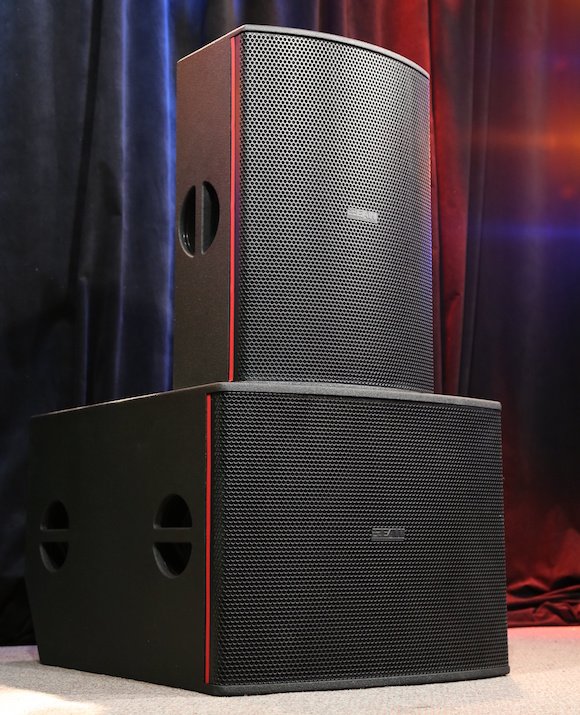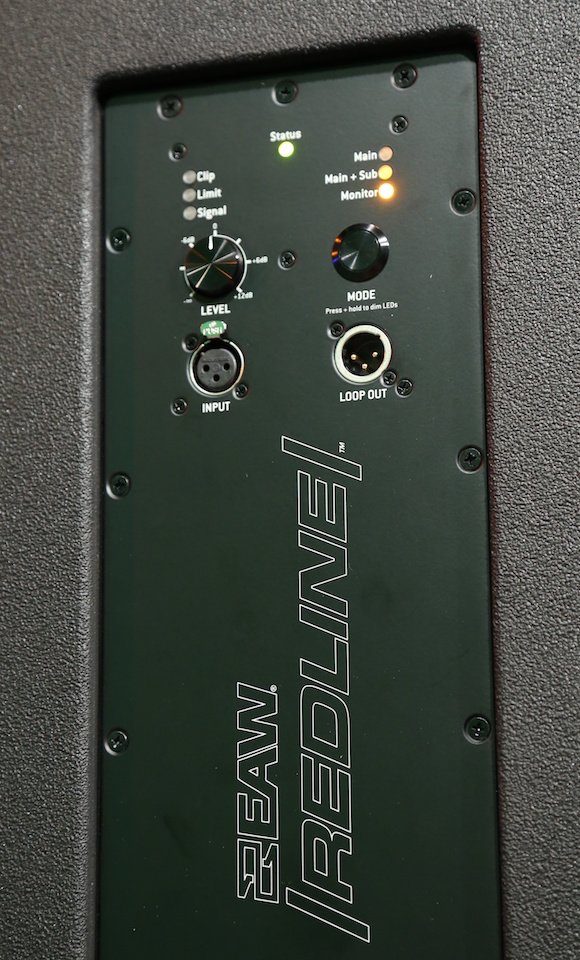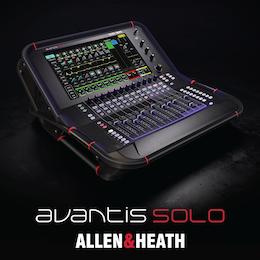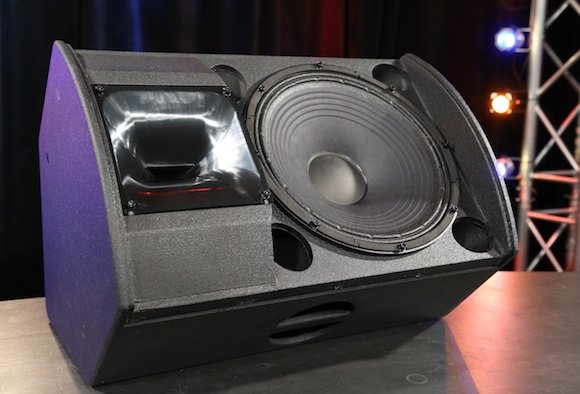Subscribe to CX E-News
Raising the bar
The past few years have seen EAW come up with some very interesting releases with Anya and Otto in their adaptive technology line. Not only do those products sound great and have a lot of internal smarts, they look really cool too. Of course not every application requires systems of such magnitude, so for such occasions EAW now offers the Redline (or RL) series.
EAW makes a big point on their website about how Redline has been designed for the live audio professional, and all the ways in which this statement applies are detailed on the site which is nice. The reality is that you needn’t read the literature – just spend some time with the product and you’ll understand the claim is well founded.
The RL series comprises three models – two active two-way full range boxes and a subwoofer. For the purposes of this review we ran an RL15 two-way box and an RL18S subwoofer through their paces. There’s also an RL12 in the range.
Even before you get to plugging the RL boxes into anything, it’s obvious EAW has carefully considered the design of these units. They look immediately professional, with inset handles, discrete matte black badging on the grille, and the obligatory red line down each side. The red line is a removable magnetic strip which conceals the grille screws – you’ll need to know this if you plan to use the full-range boxes as monitors, since the HF waveguides are rotatable. Default is 90×60 degrees (HxV).
The full-range cabinets are symmetrically trapezoidal, which means you can lay them on either of the rear faces to allow symmetrical monitor pairing. Of course if you do this one of the amplifier modules will be facing the ground, but that’s okay because the modules can be manually relocated into the opposing rear face. Three M8 rigging points allow the full range cabinets to be vertically own. Lots of thought has gone into the design.
The amplifier module on the RL15 appears outwardly very simple – audio in and loop out on XLR, the same for mains on PowerCon, plus an input level control, voicing mode and other indicators, and a single pushbutton. The button allows you to toggle between three voicing modes on the full-range speakers: Main, Main + Subwoofer, and Monitor. Pressing the button changes voicing, and holding it dims the LEDs. Like I said, it looks very simple, but what’s hiding behind the panel is DSP with EAW Focusing and DynO processing, plus dual Class D amplification.
Sonically the differences between these modes didn’t sound radical, and looking up the response plots on the spec sheet confirmed this was as it should be – the differences are subtle and mainly in the lower end of the spectrum. The RL15 was well behaved when deployed as a monitor too, and the ‘monitor’ voicing mode was a nice match with the two common vocal mics I tried.
The RL18 sub has three modes of operation– standalone, and forward or rear facing cardioid modes. Simply stack a pair of RL18s then choose the appropriate mode to create a cardioid sub array. It takes about less than a minute. Way cool.
We put a single RL15 (no sub) to test in our of office using pink noise and increasing the input level until the amplifier hit LIMIT. Measured at 1m, the RL15 sustained an SPL of 114.6dBA. Using various audio tracks as a source the speaker showed no signs of distress even when driven very hard. Not content with this test, I drove it well into clip – nothing made bad smells and it still worked the same way afterward. I’m going to put it out there and say the RL series seems rock solid.
EAW claim the three included voicings let you “sound like you spent hours tuning”, and it’s largely true. The RL15 and RL18S combo is elegant and powerful, and importantly it sounds good the moment you turn it on. In a space with half-decent acoustics you could easily use this system with no EQ – it’s quite linear.
I’ve often found that subwoofers in this type of setup commonly run out of puff before the corresponding mid-high cabinet, but this was certainly not the case with the RL18S. The frequency response data shows a rapid if very linear roll-off from 40Hz (-10dB at 30Hz), which is largely in line with what you’d expect from a cabinet of this volume. There’s an audible peak around 50Hz, and again this is consistent with the plot data.
Data aside, the RL18S certainly had no problem rattling many parts of our building, and its brutal output level is a great match for the RL15. At my relatively short listening distance I found turning the sub down by 6dB yielded a nicely balanced response, but for larger spaces I’d likely just run both inputs at 0dB. I didn’t try the cardioid mode, but assuming it follows spec the same way as everything else it should be good.
I like the RL series. I like how it looks, I like how it sounds, I like the price and build quality, and I especially like that the range is not over-complicated with too many models. Simple things, done well.
- Brand: EAW
- Model: Redline
- RRP:RL12 – AUD$5,099.00 RRP inc GST. RL15 – AUD$5,593.00 RRP inc GST. RL18S – AUD$6,994.00 RRP inc GST.
- Product Info: www.eaw.com
- Distributor: www.pavt.com.au
First published in CX Magazine (November, 2015)
Subscribe
Published monthly since 1991, our famous AV industry magazine is free for download or pay for print. Subscribers also receive CX News, our free weekly email with the latest industry news and jobs.














